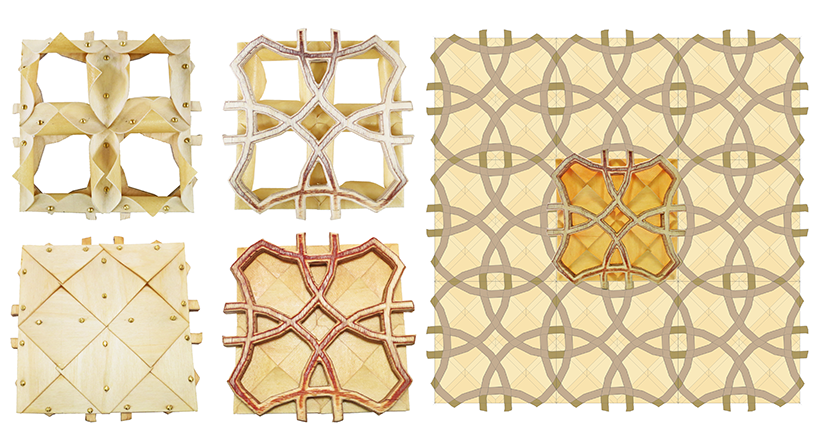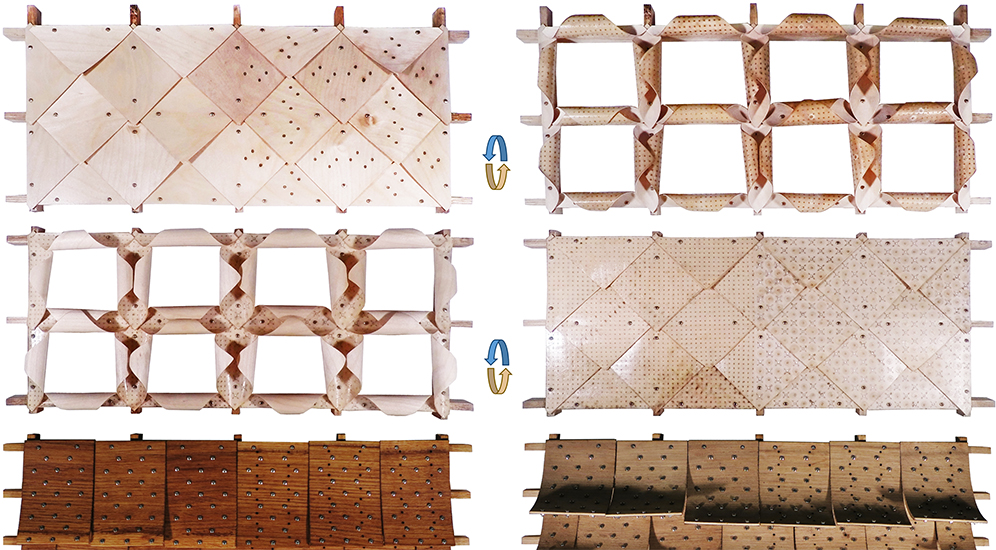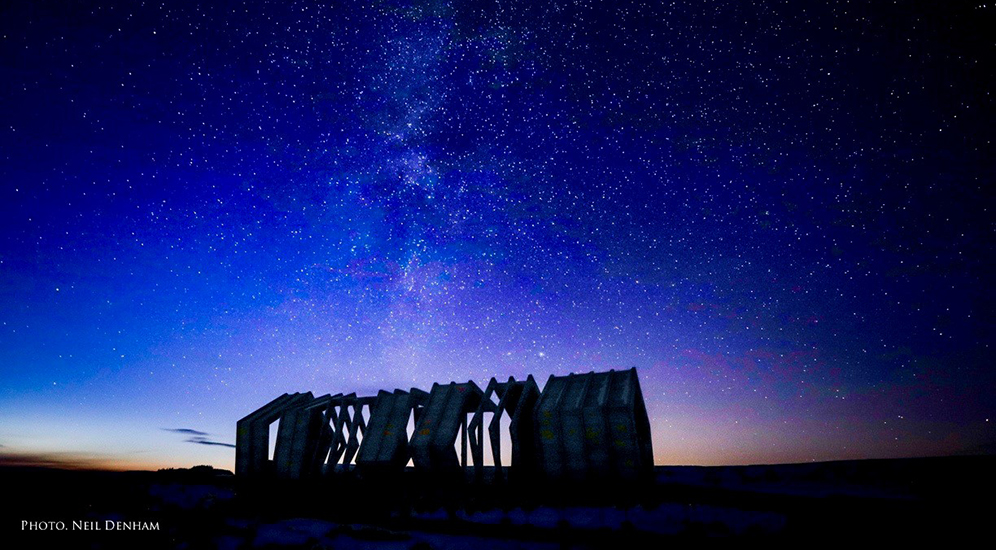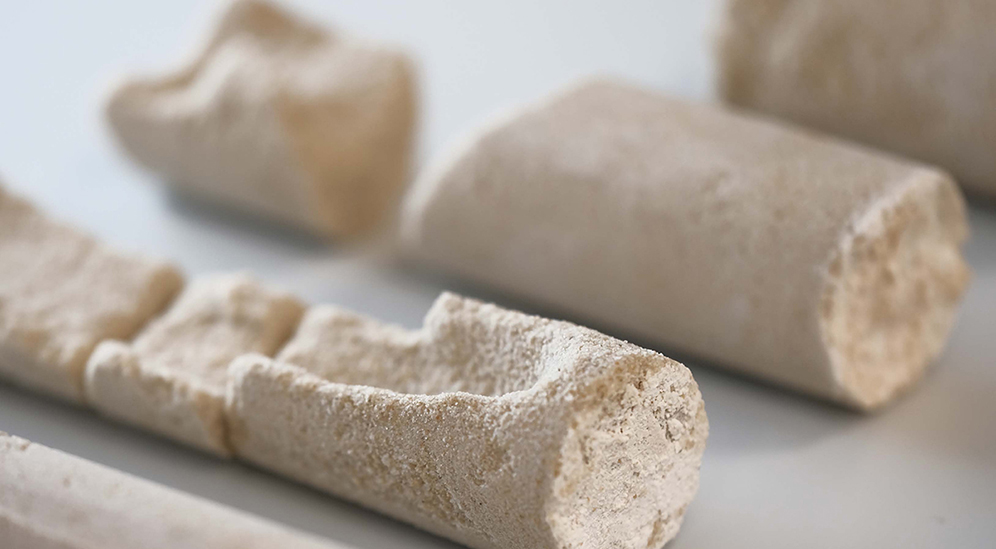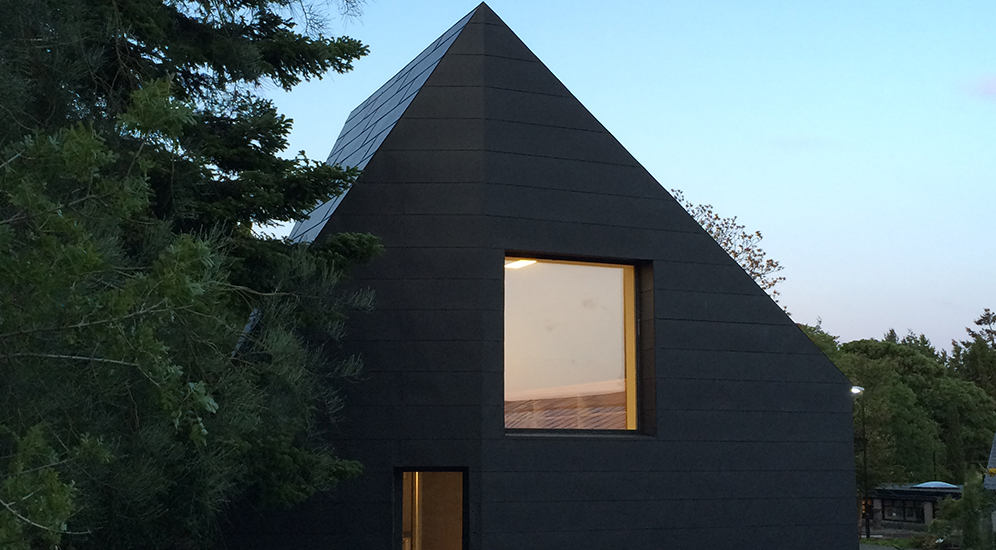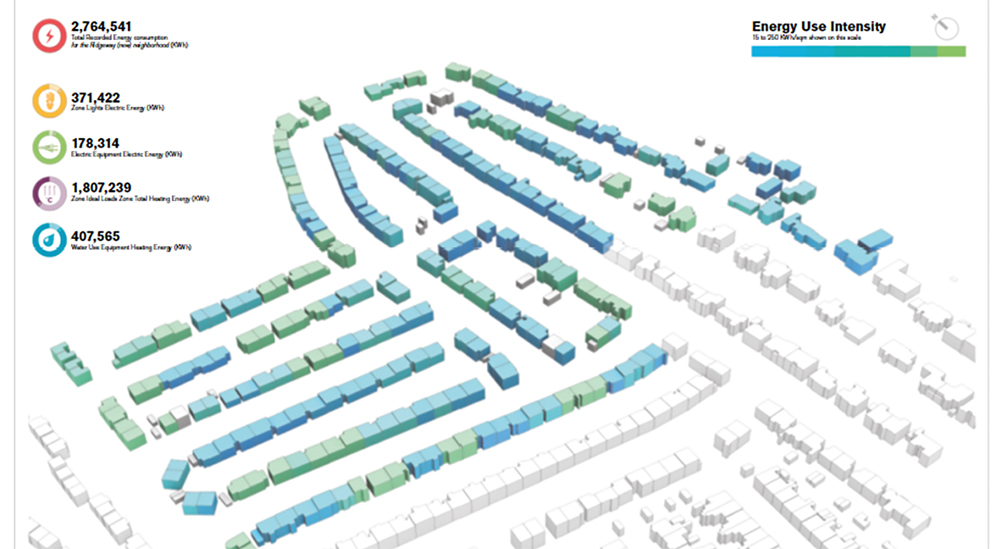ARC: Matter and Ecologies
We interrogate many design-led approaches from biology, engineering, architecture, and creative arts practice.
We want to better understand the interrelationships between people, matter, and energy. This involves looking across many scales from the macro to the micro, within both natural and man-made ecologies.
Our work on ‘Living Architecture’ exemplifies our approach. This includes:
- the design
- prototyping and deployment of active and responsive materials and systems
- utilising unique facilities including both biological laboratories and large scale fabrication
At the macro scale we analyse flows, processes, and energetics of matter in complex spatial networks and ecologies.
Theme Projects
Hygromorph
Ben Bridgens, Graham Farmer & Artem Holstov
Contemporary “smart” building systems typically aim to reduce building energy use by means of technologically enabled climate-responsiveness; however, these technologies lack the efficiency and elegance of naturally responsive mechanisms which employ the inherent properties of materials, such as the moisture-induced opening and closing of conifer cones.
This mechanism can be replicated to produce low-tech, low-cost hygromorphs: moisture-sensitive materials which change shape due to shrinkage and swelling of wood, with potential for both functional and aesthetic architectural applications.
Publications
Holstov, A., Farmer, G., & Bridgens, B. (2017). Sustainable Materialisation of Responsive Architecture. Sustainability.
Holstov, A., Bridgens, B. N., & Farmer, G. (2015). Hygromorphic materials for sustainable responsive architecture. Construction and Building Materials, 98, 570–582.
Contact
ben.bridgens@ncl.ac.uk
https://blogs.ncl.ac.uk/responsive-materials/
Testing Ground
Graham Farmer
The Live Build projects are a collaboration between MArch (Master of Architecture) Students and Kielder Art and Architecture. They are completed under the supervision of Professor Graham Farmer whose academic work explores the connection between design practice, teaching and research through engagement with communities.
The projects provide students with practical insights and skills as well as the opportunity to work with external organisations, clients, users and communities. They also allow for ‘real world’ experimentation with materials, performance and different modes of design practice.
Bacterial Sculpting
Thora H Arnardottir
This research explores ways in which the design paradigm can potentially shape living matter through biomineralisation. In this convergence of design and biological fabrication, the role of the designer is shifting from sculptor to assuming the perspective of the cultivator in the study and production of these new material assemblages. By concentrating on microbial induced mineral structuring, I am developing a biofabrication process whose purpose is to be partly in control of the physical geometry through altering compositions in the environment.
Supervisors
Dr Martyn Dade-Robertson & Dr Helen Mitrani
Contact
t.h.arnardottir2@ncl.ac.uk | www.thoraha.com | www.synbio.construction
The Energy Autarkic Living Laboratory
Neil Burford [marcomicro studio]
The Energy Autarkic Living Laboratory is an integrated technical platform for the ongoing research, technical development, assessment and in-use performance of an experimental energy self-sufficient building. The project develops novel spatial and constructional techniques for the design of a small-scale self-build, Passivhaus prototype and tests the viability of achieving energy autonomy in both regulated and unregulated energy demand. The research also takes into account the use of regionally sourced materials, water conservation and treatment and the design’s material and formal responses to its landscape context.
Publications
Burford, Reynolds, Rodley & Jones, 2015. Macro Micro Studio: A Prototype Energy Autonomous Laboratory, Sustainability, Basel, Vol. 7, 1-x manuscripts; doi:10.3390/su70x000x
Burford & Robertson, 2016. Prototype Zero Energy Studio: A research-led, student-centred live build project: Case Study, Brookes eJournal of Learning and Teaching, Oxford Brookes
University.
Contact
neil.burford@newcastle.ac.uk
https://www.ncl.ac.uk/apl/staff/profile/neilburford.html#background
Planning Heating Electrification
Carlos Calderon
An area-based modelling approach for planning heating electrification
This is part of my long standing research theme on energy transition for Newcastle’s domestic stock. This theme started in 2008.
This paper presents an area-based modelling approach to heat electrification using 17,741 dwellings in the city of Newcastle upon Tyne as a case study. The presented framework has been developed so as to address local energy policy questions on the impact of electrical heating options for the domestic stock. These questions reflect current issues and under-researched research challenges such as the quantification of peak electricity demand for heat pumps based electrification options.
The paper’s finding are significant (see impact below) and the highlights are:
• Electrification of heat at city-scale will have a substantial impact on the local electrical grid.
• Peak (winter) household electricity demand ranges from 59-95% on peak LV sub-station demand.
• These ranges are significantly lower than those identified in the existing literature.
• Modelling of local knowledge, and, HP performance metrics and HP demand has a significant impact.
• A modelling approach to cope with forthcoming system design challenges at LV scale is suggested.
Collaborative partners
Local stakeholders: Newcastle City Council.
External stakeholders: Energy Technologies Institute, Catapult Energy Systems
Other departments: the School of (Electrical) Engineering at Newcastle University
Funding £49,919.72
